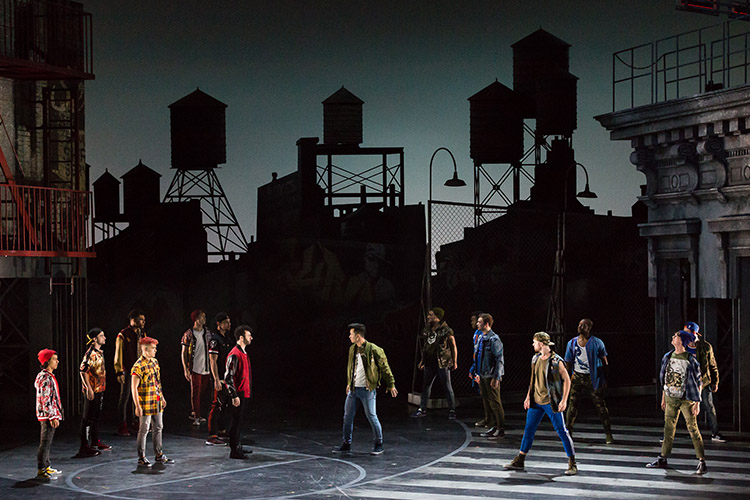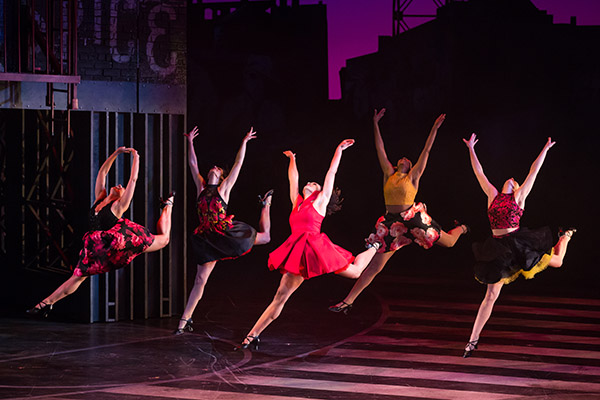March 06, 2019
WEST SIDE STORY Presented on a Lyric Scale
When audiences see West Side Story at Lyric this spring, they will experience Leonard Bernstein and Stephen Sondheim’s glorious musical with all the resources provided by a great opera house.
But what does it take to put a show like West Side Story on Lyric’s stage? And how does staging a musical differ from staging an opera?
Currently at Lyric, if someone walks backstage they might see part of a set depicting a Scottish meeting hall in the 1970s (Ariodante) stowed away next to a crumbling Greek palace (Elektra), in front of which is a Parisian party table laden with confections (La traviata), as up to three operas are presented in repertory during the mainstage opera season. But when Lyric produces a musical, there are no other shows happening at that time, and our entire performance and rehearsal space is dedicated to that production.

Everything Lyric does is on a large scale, including our musicals. At a smaller theater or with a touring show, a performance might have 8 to 10 orchestra members in the ensemble. For musicals like West Side Story, we have an orchestra of more than 40 musicians that fills our house with sound.
Preparing a musical-theater production with an all-new cast is no small feat. Lyric’s creative team spends months auditioning actors, singers, and musicians. Then, after the cast is finalized and our sets are delivered, it’s time to rehearse! Touring musical companies or Broadway shows can have months to rehearse and preview a show. At Lyric, our amazing creative team condenses that job into a few weeks.
Like a well-practiced orchestra playing each part with perfect timing, Lyric’s rehearsal and artistic departments organize separate, individual rehearsals for specific parts, scenes, or choreography—all in different backstage rooms—all going on at the same time. The voice of the choreographer is much more pronounced in a musical than in an opera. That means that dancers and performers must have very different kinds of practices for musicals than for operas. The director, choreographer, singing coach, and conductor all run separate rehearsals for various groupings of the cast before coming together in onstage rehearsals that precede the month-long run of performances.

On top of the jigsaw puzzle of rehearsal schedules that the Lyric creative team is organizing, there is one other major difference in preparing for a musical opposed to an opera: sound. Operas at Lyric (as with all the great opera houses of the world) don’t use any amplification for the performers on stage. What you’re hearing in the back row of the house is coming directly from a singer’s lips, no speakers involved. But for musicals at Lyric, because of the number of performances and differences with music, spoken dialog, and dancing, our performers use amplification to fill the opera house with beautiful musical numbers night after night. Setting up, testing, fine tuning, and rehearsing those amplification systems add even more requirements on our team to ensure that every musical performance here is on the exact same scale and quality as our world-class mainstage operas.
It takes a lot of work to present a musical at Lyric. But as audiences have seen year after year, the payoff is absolutely worth it. Don’t miss your chance to see Lyric’s West Side Story and experience the large-scale musical yourself!


